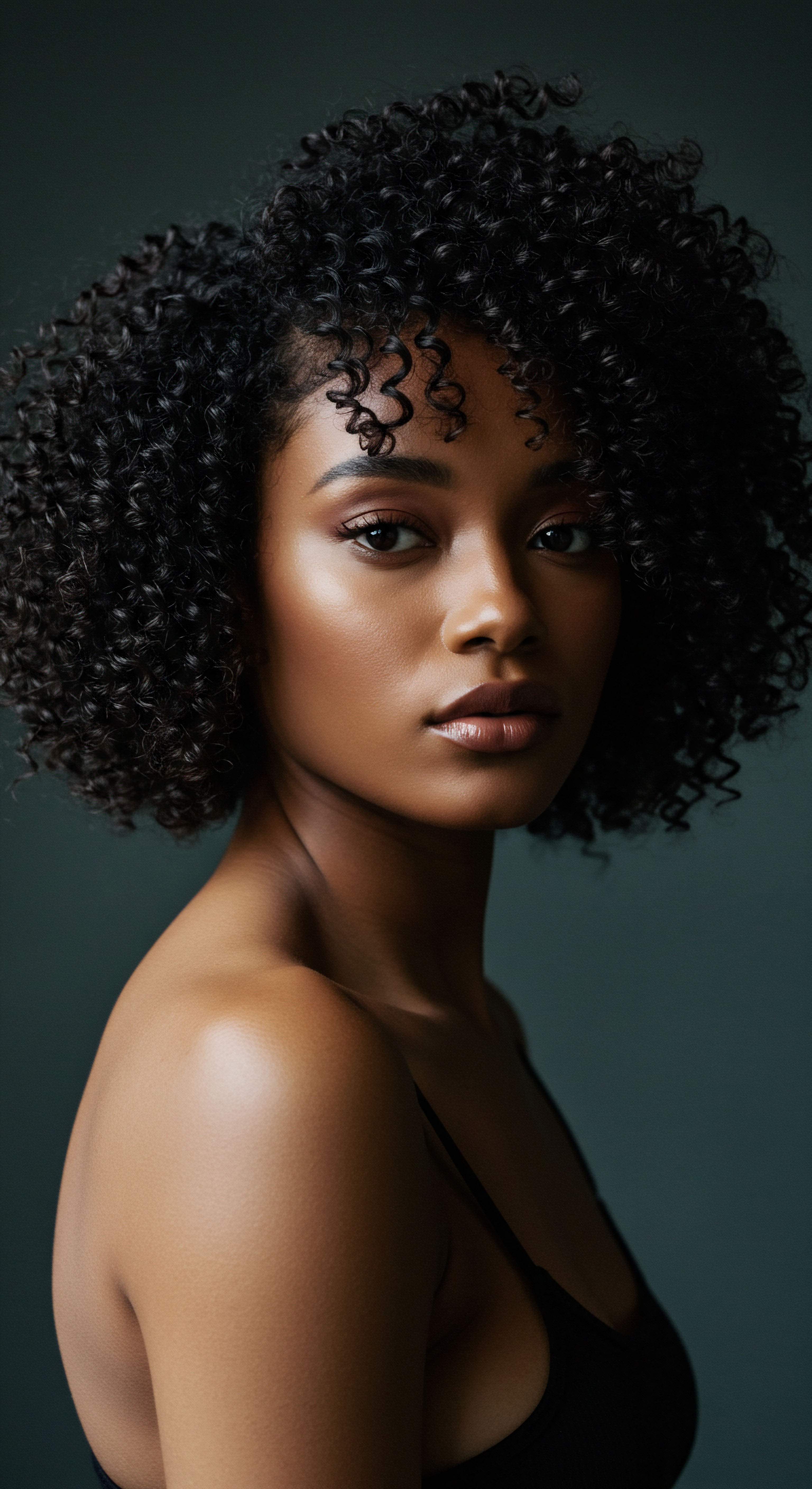
Roots
The quiet rhythms of the body, often expressed through the restorative embrace of sleep, hold a deeper connection to our very strands. Melatonin, a familiar messenger of slumber, hints at a subtle influence extending beyond nocturnal repose, whispering promises to the very foundations of our hair’s vitality. This exploration invites a gentle beckoning into the elemental understanding of how this hormone, often associated with the night’s quiet, might find a meaningful place within the cherished practices of textured hair care. It is a journey into the intricate workings beneath the scalp, a place where science and tradition meet, allowing us to consider the well-being of our hair from its deepest origins.
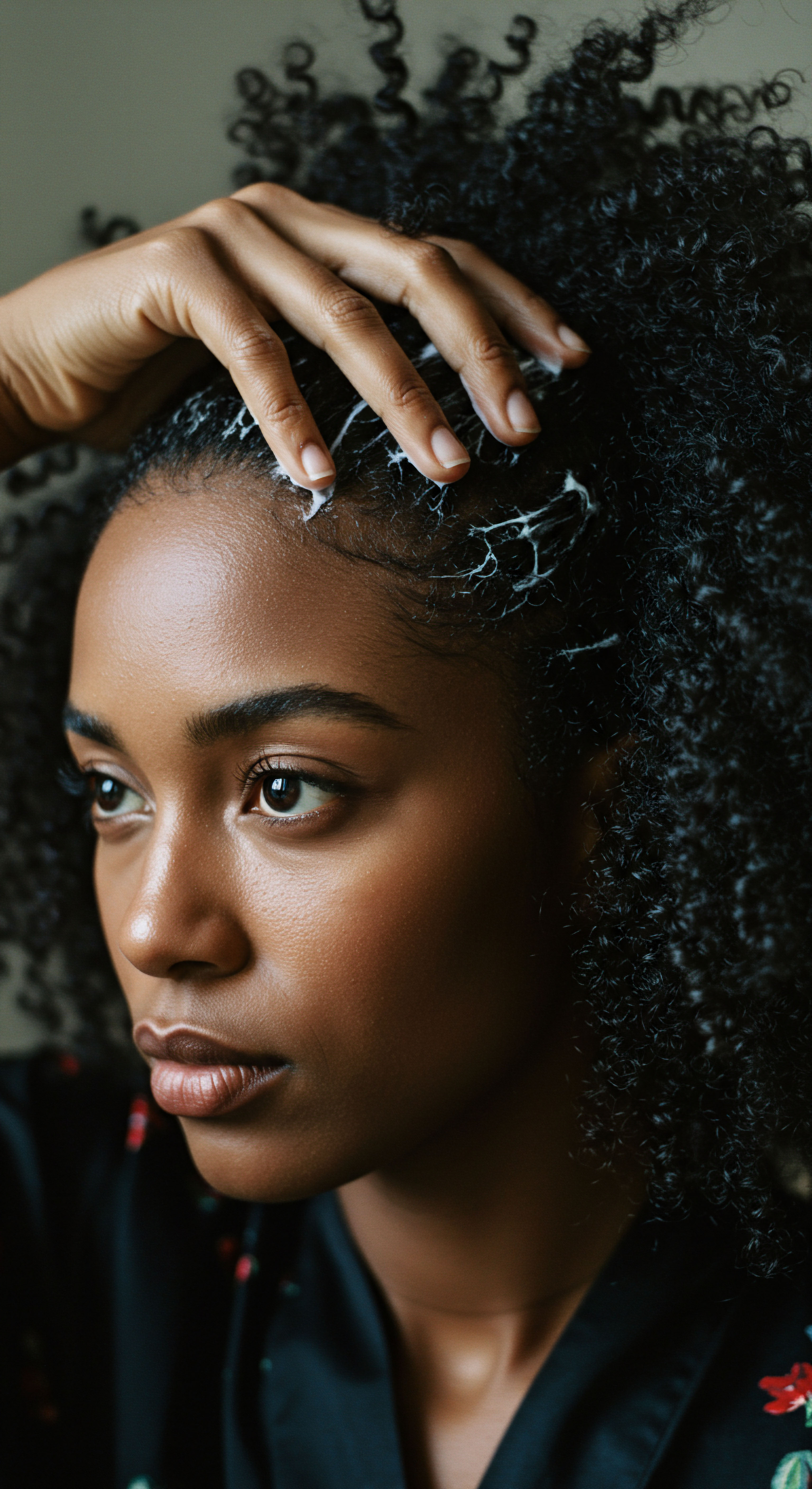
What is Melatonin and Its Role in the Body?
Melatonin, scientifically known as N-acetyl-5-methoxytryptamine, is a neurohormone produced primarily by the pineal gland, a small endocrine gland in the brain. Its most widely recognized function is regulating the body’s circadian rhythm, our internal clock that governs sleep-wake cycles. As daylight wanes, melatonin production rises, signaling to the body that it is time to rest, promoting a sense of drowsiness and a slight decrease in body temperature. Beyond its nocturnal duties, melatonin exhibits powerful antioxidant and anti-inflammatory properties.
It acts as a direct scavenger of free radicals, helping to shield cells from oxidative stress, a process linked to cellular damage and aging. This protective capacity extends throughout the body, touching various physiological processes, including immune function and mood regulation.
However, melatonin’s story does not conclude with the pineal gland. It is also synthesized in several extra-pineal sites, including the retina, skin, bone marrow, cerebellum, and the gastrointestinal tract. The skin, in particular, demonstrates a remarkable capacity for local melatonin production, with concentrations in human scalp hair follicles often exceeding those found in serum.
This localized synthesis suggests a specific, perhaps unique, role for melatonin directly within the skin and its appendages, including the hair follicle itself. This localized presence hints at a direct interaction with the very structures that give rise to our hair.

The Hair Follicle A Microcosm of Life
To truly appreciate melatonin’s potential role, one must first consider the hair follicle. Far more than a simple anchor for a strand, the hair follicle is a dynamic mini-organ, a bustling hub of cellular activity. Each follicle operates on its own intricate cycle, moving through phases of active growth (anagen), regression (catagen), and rest (telogen), before shedding and beginning anew.
This cycle is finely tuned, influenced by a symphony of hormones, growth factors, and cellular signals. The dermal papilla, a cluster of specialized cells at the base of the follicle, serves as the command center, sending signals that direct hair growth and development.
The vitality of this cycle is paramount for textured hair, which, due to its unique structural characteristics, can be more susceptible to breakage and dryness. The natural twists and turns of textured strands create points of vulnerability, making the integrity of the hair follicle and the strength of the new growth particularly important. Any disruption to the hair growth cycle, whether from stress, nutritional deficiencies, or environmental factors, can manifest as thinning, shedding, or a reduction in overall hair health.
Melatonin, beyond its sleep-regulating role, holds protective qualities that could support the very origins of hair health.

Connecting Sleep and Hair Health Why It Matters
The adage of “beauty sleep” carries more scientific weight than often perceived. Sleep is not merely a period of inactivity; it is a crucial time for bodily repair and regeneration. During deep sleep, the body releases growth hormones essential for cell renewal, including those within the hair follicles. Blood flow to the scalp increases, delivering vital oxygen and nutrients to the hair’s root system, thereby supporting the active growth phase.
Conversely, insufficient or disrupted sleep can raise cortisol levels, the body’s primary stress hormone. Elevated cortisol can prematurely push hair follicles into the resting (telogen) phase, leading to increased shedding, a condition known as telogen effluvium. This hormonal imbalance, coupled with reduced blood flow and impaired cellular repair, can significantly compromise hair health over time.
For textured hair, already prone to dryness and fragility, these impacts can be particularly noticeable, potentially exacerbating issues like breakage and a lack of vibrancy. A restful night’s sleep, therefore, acts as a foundational element for maintaining healthy, thriving strands.
Understanding the intrinsic link between sleep, hormonal balance, and hair follicle function provides a powerful context for considering external aids. The possibility of introducing a compound like melatonin, known for its role in regulating sleep and possessing cellular protective qualities, opens a compelling avenue for supporting hair wellness from within the daily ritual.

Ritual
Stepping into the practical application of wisdom, we turn our attention to the daily and periodic practices that shape the lived experience of textured hair. The introduction of melatonin into a textured hair care regimen calls for thoughtful consideration, a gentle hand, and a deep understanding of how this hormone, often associated with internal rhythms, might best serve our external crown. This section moves from the foundational understanding to the applied, exploring the various ways melatonin might find its place, not as a quick fix, but as a supportive element within a holistic approach to hair wellness.
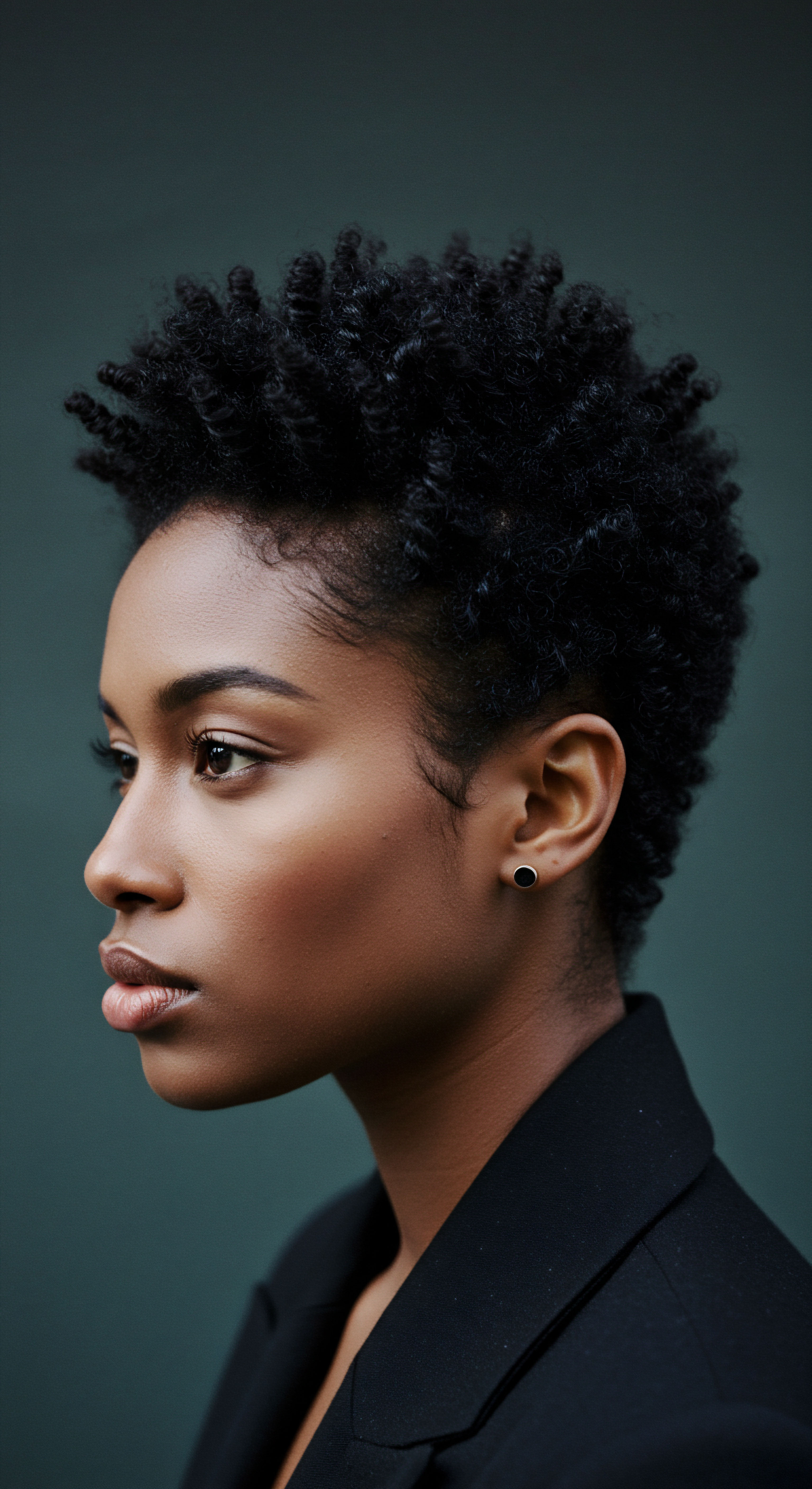
Topical Melatonin How It Works for Hair
The most direct way to introduce melatonin into a hair care regimen is through topical application. When applied to the scalp, melatonin can be absorbed by the hair follicles, which possess specific receptors for this hormone, namely MT1 and MT2 receptors, and the nuclear receptor RORα. These receptors are expressed in skin cells and are involved in cellular proliferation and differentiation. This direct interaction at the follicle level suggests a mechanism where melatonin can influence the hair growth cycle.
Research indicates that topical melatonin may prolong the anagen (growth) phase of the hair cycle. By extending this active growth period, the hair has more time to grow longer and stronger, potentially leading to increased density and thickness. Melatonin’s antioxidant properties also play a protective role, shielding hair follicles from oxidative stress, a known contributor to hair damage and loss. This protective shield helps to maintain the health of the follicle, allowing it to function optimally.
One particularly noteworthy study, a 2012 multi-center study, involved over 1800 volunteers at 200 centers and explored the impact of a topical melatonin solution. This extensive trial found that the percentage of patients with a 2- to 3-fold positive hair-pull test, an indicator of active hair shedding, decreased significantly from 61.6% to 7.8% after three months. Concurrently, the percentage of patients with a negative hair-pull test, suggesting reduced shedding, rose from 12.2% to 61.5%.
This large-scale data, often overlooked in broader discussions of hair solutions, highlights a compelling reduction in hair loss with topical melatonin application, offering a less common but scientifically supported perspective on its efficacy. This particular data point, from a study of considerable size, offers a tangible glimpse into melatonin’s potential to calm the hair’s natural shedding cycle.

Formulation Considerations for Textured Hair
Bringing melatonin into a textured hair care regimen requires careful thought about product formulation. Textured hair, with its unique coil patterns and propensity for dryness, needs products that offer significant moisture and slip, while also being gentle on the scalp.
- Vehicle selection ❉ The base for a melatonin product for textured hair should be a non-stripping, hydrating vehicle. Creams, lotions, or serums that offer good spreadability and absorption without leaving a heavy residue are often preferred. Water-based formulas or those with lightweight oils could work well, ensuring the product does not weigh down delicate curls or coils.
- Concentration levels ❉ Studies on topical melatonin for hair growth often mention concentrations around 0.0033% to 0.1%. It is prudent to begin with lower concentrations to assess individual scalp sensitivity and response, gradually adjusting as needed. Higher concentrations are not necessarily more effective and could potentially cause irritation.
- Ingredient compatibility ❉ Melatonin’s stability can be affected by light and heat. Formulations should consider packaging that protects the product from degradation, such as opaque or amber bottles. Additionally, compatibility with other ingredients commonly found in textured hair products, such as humectants, emollients, and botanical extracts, must be carefully evaluated to ensure stability and efficacy. The presence of other antioxidants might complement melatonin’s protective actions.
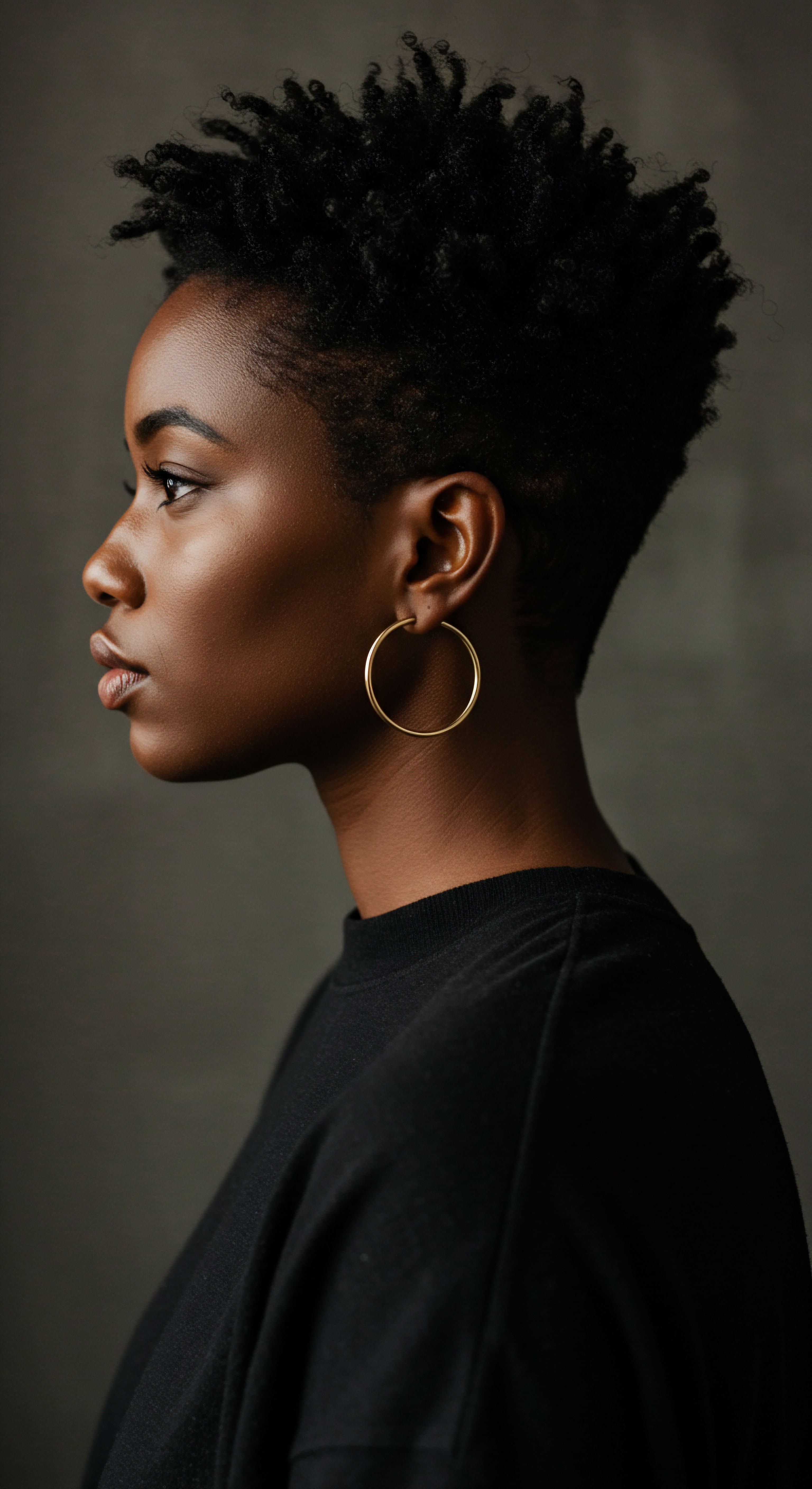
When to Apply Melatonin in a Regimen?
Considering melatonin’s natural association with sleep, evening application often makes the most sense. Applying it before bed allows the product to work overnight, aligning with the body’s natural restorative processes. This timing may also minimize potential sun exposure to the product, which could affect its stability.
The evening ritual for textured hair often involves moisturizing, sealing, and protective styling. A melatonin serum or scalp treatment could be applied directly to the scalp after cleansing and conditioning, before styling products. Gentle massage during application can also stimulate blood flow to the scalp, further aiding in product absorption and overall scalp health.
Topical melatonin, especially in a suitable formulation, offers a promising path for textured hair care, with evidence pointing to its ability to reduce shedding.
Consistency is paramount for any hair care addition, particularly when aiming for biological shifts like hair growth cycle modulation. Daily or every-other-day application, as directed by the specific product or a hair care professional, would likely yield the most noticeable results over a period of several months. Patience and regularity are key when inviting a new element into the delicate balance of hair health.
| Aspect Application Timing |
| Key Considerations Evening application is often favored, aligning with the body's natural circadian rhythm and minimizing light exposure to the product. |
| Aspect Formulation Type |
| Key Considerations Opt for lightweight serums or non-greasy lotions that do not disrupt curl patterns or leave heavy residue. |
| Aspect Scalp Health |
| Key Considerations Ensure the scalp is clean and free of excessive buildup to allow for optimal absorption. |
| Aspect Product Storage |
| Key Considerations Store in opaque, airtight containers away from direct light and heat to preserve melatonin's stability. |
| Aspect Thoughtful application and product selection are vital for maximizing melatonin's benefits for textured hair. |

Potential Interactions and Sensitivities
While topical melatonin is generally considered well-tolerated, individual sensitivities can always arise. Mild scalp irritation, temporary redness, or dryness have been reported in some instances. It is always wise to perform a patch test on a small, inconspicuous area of the scalp before full application to check for any adverse reactions.
For individuals already using other topical hair growth solutions, consulting with a trichologist or dermatologist is advisable to ensure compatibility and avoid potential interactions. The aim is to supplement, not to overwhelm, the hair and scalp’s natural processes. A balanced approach, attentive to the body’s signals, guides the most harmonious journey.

Relay
The path to truly thriving textured hair often extends beyond the visible, reaching into the intricate interplay of biological, psychological, and cultural elements. This section delves into the deeper, less apparent complexities that arise when considering melatonin’s presence within textured hair care. It is an invitation into profound insight, where scientific understanding, cultural resonance, and personal experience converge to shape a more complete picture of hair wellness. We seek to understand not just what melatonin does, but how its actions resonate within the multifaceted world of textured hair, drawing upon research and nuanced perspectives.

The Hair Follicle as a Circadian Clock Monitor?
A fascinating aspect of hair biology, often overlooked, is the hair follicle’s intrinsic connection to the body’s internal rhythms. Emerging research suggests that hair follicles express circadian genes, making them potential peripheral monitors of our internal biological clock. This means the hair follicle itself is not merely a passive recipient of external stimuli but an active participant in the body’s temporal orchestration. The genes governing the circadian rhythm within the hair follicle can be modulated by both the central circadian system and external factors, such as light and thyroid hormones.
This discovery suggests a deeper connection between sleep disturbances, melatonin’s role in regulating those disturbances, and hair health. When our sleep-wake cycles are erratic, the internal clock within our hair follicles may also be disrupted, potentially impacting hair growth and pigmentation. The localized synthesis of melatonin within the skin and hair follicles, as noted in the “Roots” section, further underscores this intimate relationship.
This localized melatonin may act as a direct regulator, helping to maintain the hair follicle’s rhythmic functions, independent of systemic melatonin levels. This dual nature of melatonin – systemic and local – paints a more sophisticated picture of its potential influence on hair health.

How Does Melatonin Influence Hair Follicle Biology?
The influence of melatonin on hair follicle biology extends beyond merely prolonging the anagen phase. Its actions are multifaceted, touching upon various cellular pathways critical for hair growth.
- Receptor Activation ❉ Melatonin exerts its effects by binding to specific receptors. The MT1 and MT2 membrane receptors are present in the outer and inner root sheaths of cutaneous keratinocytes and fibroblasts. Additionally, the nuclear receptor RORα is expressed in the dermal papilla, the signaling center of the hair follicle. Activation of these receptors by melatonin can lead to a cascade of intracellular events.
- Gene Expression Modulation ❉ Studies indicate that melatonin can upregulate the expression of genes associated with hair growth, such as β-catenin, a key player in hair follicle development. It also appears to downregulate genes that might hinder hair follicle development, such as TCHHL1. This gene regulation points to melatonin’s capacity to steer the hair follicle towards a more active, growth-promoting state.
- Antioxidant Defense ❉ Hair follicles are susceptible to oxidative stress, which can damage cells and impair growth. Melatonin, being a potent antioxidant, helps to mitigate this damage by scavenging free radicals and boosting the efficacy of antioxidant enzymes like SOD and glutathione peroxidase. This protective action helps to preserve the integrity of the hair follicle, allowing it to function optimally amidst environmental stressors.
The hair follicle, a subtle timepiece, reveals how melatonin’s influence extends beyond mere sleep, reaching into the very rhythms of hair growth.

The Interplay of Hormones and Hair Cycles
Textured hair, like all hair, is profoundly influenced by hormonal balance. Androgens, for example, are key regulators of human hair growth, with their effects varying significantly depending on the body site. While they can stimulate growth in some areas, they can inhibit it on parts of the scalp, contributing to conditions like androgenetic alopecia. Melatonin’s potential to influence hair growth, particularly in conditions like androgenetic alopecia, suggests a possible interplay with these hormonal pathways.
Some research hints at melatonin’s anti-androgenic properties, potentially counteracting the negative effects of hormones like dihydrotestosterone (DHT) on hair follicles. This interaction, if further substantiated, could be particularly relevant for individuals experiencing pattern hair loss.
Beyond androgens, other hormones such as estrogen, thyroid hormones, and growth hormone also play significant roles in the hair cycle. Melatonin’s broader influence on the endocrine system, particularly its role in regulating circadian rhythms which in turn affect various hormonal secretions, positions it as a compound with systemic reach. A disruption in sleep, and by extension, melatonin production, can throw these hormonal balances into disarray, leading to widespread effects on the body, including hair health.

Considering Cultural Contexts of Hair and Rest
The integration of melatonin into textured hair care is not solely a scientific or biochemical discussion; it touches upon deep cultural practices and the holistic view of well-being prevalent in many communities. For generations, textured hair care has been intertwined with rituals of self-care, protection, and communal bonding. Nighttime routines, particularly, hold significant cultural weight.
The practice of wrapping hair in silk scarves or bonnets before sleep, for instance, is a widespread and cherished tradition among Black women. This practice is not just about preserving a style; it is an act of care, a moment of recentering after navigating the day, and often, a connection to ancestral knowledge of hair protection.
This ritual of preparing hair for rest aligns beautifully with the physiological benefits of sleep for hair health. When we consider melatonin, a hormone deeply linked to restorative sleep, we are not introducing an entirely foreign concept, but rather amplifying an existing understanding of rest as a cornerstone of beauty and well-being. The conversation shifts from merely applying a product to deepening the existing reverence for the nighttime sanctuary as a period of profound renewal for both the individual and their strands.
Moreover, the understanding of hair as a reflection of overall health, and not just an isolated aesthetic feature, is deeply embedded in many cultural perspectives. This holistic viewpoint aligns with melatonin’s pleiotropic effects, extending beyond hair growth to its antioxidant and anti-inflammatory actions, which contribute to general well-being. Approaching melatonin within this broader cultural and holistic framework allows for a more resonant and meaningful adoption within textured hair care practices. It moves beyond a purely cosmetic application to a recognition of the interconnectedness of body, mind, and hair.
| Mechanism Receptor Activation |
| Biological Impact Stimulates MT1, MT2, and RORα receptors within hair follicles, influencing cellular processes. |
| Mechanism Gene Expression |
| Biological Impact Upregulates growth-promoting genes (e.g. β-catenin) and downregulates inhibitory genes (e.g. TCHHL1). |
| Mechanism Antioxidant Action |
| Biological Impact Protects follicles from oxidative stress, enhancing cell survival and function. |
| Mechanism Hormonal Modulation |
| Biological Impact May counteract androgenic effects and indirectly balance other hormones through circadian rhythm regulation. |
| Mechanism Melatonin's influence on hair is a complex interplay of direct cellular action and systemic physiological balance. |
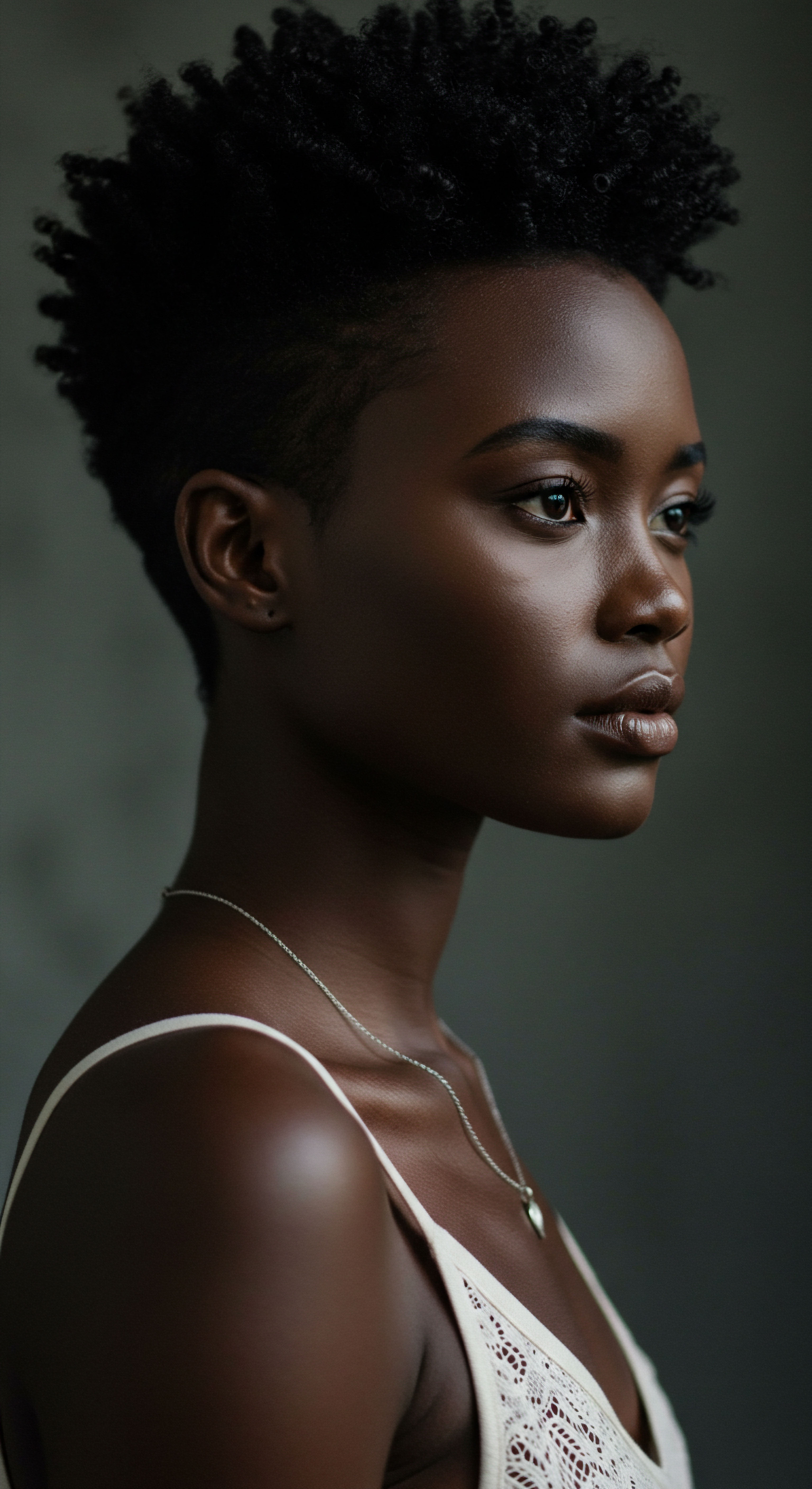
Are There Controversies or Unanswered Questions?
Despite promising findings, the full scope of melatonin’s effects on human hair, particularly textured hair, still holds areas for deeper exploration. While studies have shown positive outcomes with topical melatonin, particularly in conditions like androgenetic alopecia, more research specifically focusing on diverse hair textures and their unique responses would be beneficial. The precise mechanisms by which melatonin interacts with different hair follicle types, and how its benefits might vary across the spectrum of textured hair, remain areas for continued scientific inquiry.
Furthermore, the long-term effects of sustained topical melatonin application on scalp microbiome health, and its potential interplay with other hair care ingredients commonly used in textured hair regimens, require thorough investigation. The scientific community continues to explore the optimal concentrations, delivery systems, and combination therapies to maximize melatonin’s efficacy while ensuring safety and tolerability for all hair types. These ongoing inquiries highlight the dynamic nature of scientific understanding and the continued quest for deeper insights into hair biology and wellness.

Reflection
The journey into melatonin’s potential within textured hair care reveals a landscape rich with scientific promise and cultural resonance. It speaks to a deeper appreciation for the intricate connections within our bodies and the wisdom held in age-old practices of care. Considering melatonin is not about seeking a singular answer, but rather about inviting a supportive ally into a holistic approach, one that respects the unique needs of textured strands and the rhythms of our very being. The future of textured hair wellness rests in this thoughtful synthesis of knowledge, allowing science to inform tradition, and tradition to inspire new paths to radiant health.

References
- 1. Liu, T. et al. Melatonin regulates the periodic growth of secondary hair follicles through the nuclear receptor RORα. Frontiers in Cell and Developmental Biology, 2023.
- 2. Babadjouni, A. et al. Melatonin and the Human Hair Follicle. Journal of Drugs in Dermatology, 2023.
- 3. Fischer, T. W. et al. Topical Melatonin for Treatment of Androgenetic Alopecia. International Journal of Trichology, 2012.
- 4. Shin, H. et al. Melatonin increases growth properties in human dermal papilla spheroids by activating AKT/GSK3β/β-Catenin signaling pathway. Journal of Cosmetic Dermatology, 2022.
- 5. Kanda, N. et al. Melatonin promotes hair growth by prolonging anagen phase and upregulating the expression of growth factors in human hair follicles. Journal of Dermatological Science, 2013.
- 6. Harrison, S. & Bergfeld, W. The Hair Cycle and its Disorders. In N. T. D. Nguyen & R. L. R. Paus (Eds.), Hair Growth and Disorders. Springer, 2008.
- 7. Paus, R. & Cotsarelis, G. The Biology of Hair Follicles. New England Journal of Medicine, 1999.
- 8. Slominski, A. T. et al. Melatonin as a Regulator of the Hair Follicle Clock. Journal of Investigative Dermatology, 2005.
- 9. Kobayashi, H. et al. A role of melatonin in neuroectodermal-mesodermal interactions ❉ the hair follicle synthesizes melatonin and expresses functional melatonin receptors. The FASEB Journal, 2005.
- 10. Trüeb, R. M. The Journal of the American Academy of Dermatology, 2003.
- 11. Fischer, T. W. et al. Melatonin directly stimulates anagen hair growth in human hair follicles in vitro. Journal of Pineal Research, 2000.
- 12. Hardeland, R. et al. Melatonin in plants ❉ diversity of occurrence and function. Journal of Pineal Research, 2011.
- 13. Rusanova, I. & Zabelina, S. Melatonin and Hair Growth. In Melatonin ❉ Regulation of Hair Growth. Nova Science Publishers, 2016.
- 14. Al-Hadrawi, Z. H. et al. Effect Of Topically Applied Melatonin And Their Combination With Minoxidil Solution For Enhancement Of Hair Growth In Male Mice. Systematic Reviews in Pharmacy, 2021.
- 15. Trueb, R. M. Topical Melatonin in the Treatment of Androgenetic Alopecia. Skin Therapy Letter, 2017.